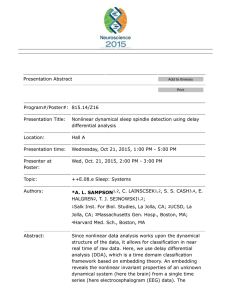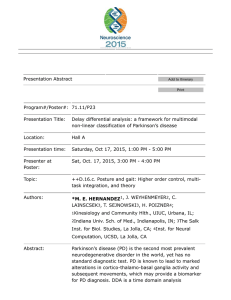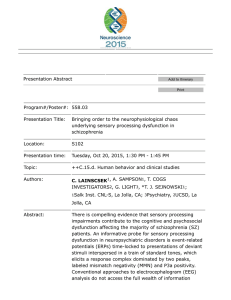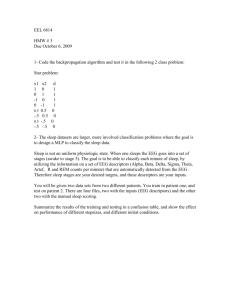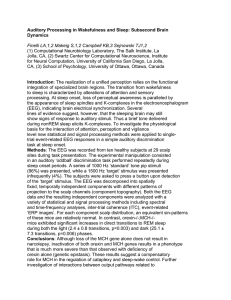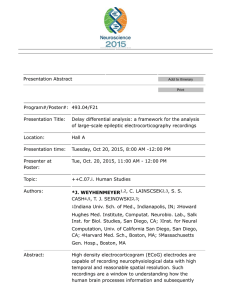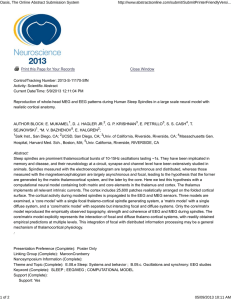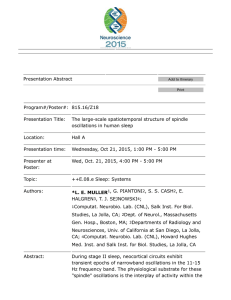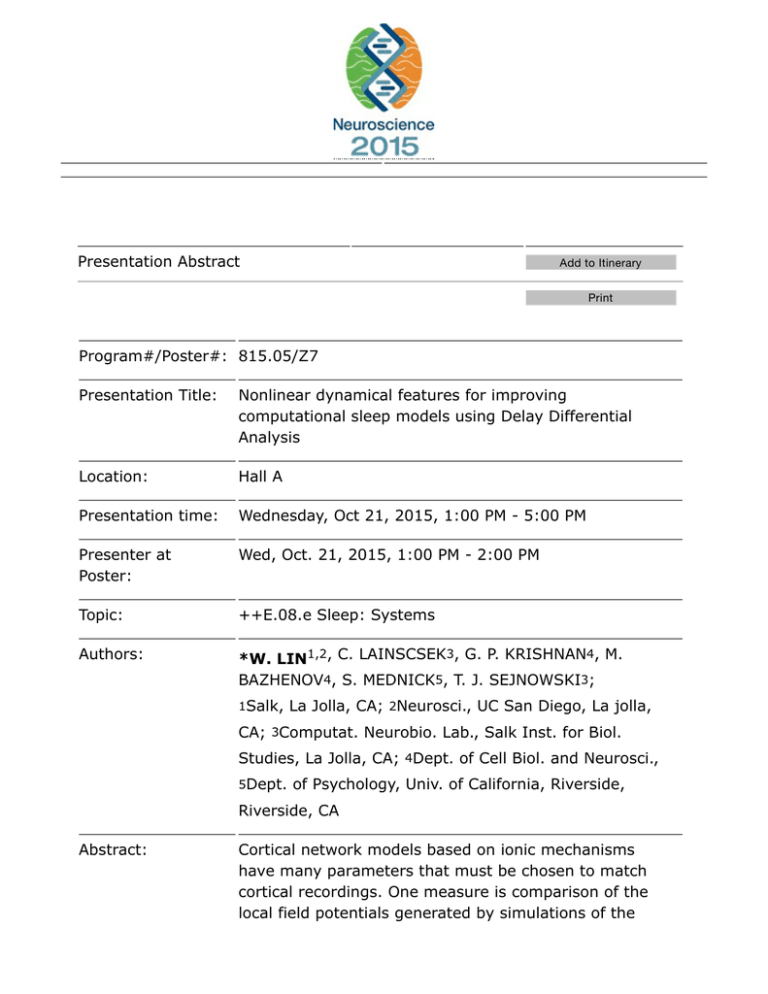
Presentation Abstract
Add to Itinerary
Print
Program#/Poster#: 815.05/Z7
Presentation Title:
Nonlinear dynamical features for improving
computational sleep models using Delay Differential
Analysis
Location:
Hall A
Presentation time:
Wednesday, Oct 21, 2015, 1:00 PM - 5:00 PM
Presenter at
Poster:
Wed, Oct. 21, 2015, 1:00 PM - 2:00 PM
Topic:
++E.08.e Sleep: Systems
Authors:
*W. LIN1,2, C. LAINSCSEK3, G. P. KRISHNAN4, M.
BAZHENOV4, S. MEDNICK5, T. J. SEJNOWSKI3;
1Salk,
La Jolla, CA; 2Neurosci., UC San Diego, La jolla,
CA; 3Computat. Neurobio. Lab., Salk Inst. for Biol.
Studies, La Jolla, CA; 4Dept. of Cell Biol. and Neurosci.,
5Dept.
of Psychology, Univ. of California, Riverside,
Riverside, CA
Abstract:
Cortical network models based on ionic mechanisms
have many parameters that must be chosen to match
cortical recordings. One measure is comparison of the
local field potentials generated by simulations of the
model with electrocephalogram (EEG). Here, we use
delay differential analysis (DDA), which is a time domain
classification framework based on embedding theory in
nonlinear dynamics to make the comparison. An
embedding reveals the nonlinear invariant properties of
an unknown dynamical system (here the brain) from a
single time series (here EEG data). The embedding in
DDA serves then as a low-dimensional nonlinear
functional basis onto which the data are mapped. Since
the basis is built on the dynamical structure of the data,
preprocessing of the data (such as filtering) is not
necessary. DDA yields a low number of features (around
4), far fewer than traditional spectral techniques. This
greatly reduces the risk of overfitting. A model that was
trained on a single EEG channel from one subject can be
applied to a wide range of data from different subjects,
channels, and recording systems. In this project, we
varied the network's thalamocortical fan-out to simulate
networks with different levels of connectivities. Then, we
apply DDA to construct a set of non-linear features for
the real human sleep EEG data and each network
simulation. Finally, the cross correlation between each
network simulation and the real sleep data is computed.
Our results show that within the connection range we
simulated, networks with medium levels of fan-out rate
have the highest correlation with real sleep data. This
implies that there is an optimum level of connection
between the thalamus and the cortex. A too narrow or
too broad fanout will disrupt the simulation dynamic
from that of real sleep. (Lainscsek, C. Sejnowski, T. J.
Delay Differential Analysis of Time Series, Neural
Computation, 27, 594-614, 2015)
Disclosures:
W. Lin: None. C. Lainscsek: None. G.P. Krishnan:
None. M. Bazhenov: None. S. Mednick: None. T.J.
Sejnowski: None.
Keyword (s):
sleep modeling
nonlinear dynamics
EEG
Support:
ONR (MURI award N000141310672)
Swartz Foundation
Howard Hughes Medical Institute
Note: When adding items to your Itinerary, please click "Add Checked Selections to
My Itinerary" on EACH page of your search results.
At the Meeting
Sessions/Events
Abstracts
Registration
Hotel/Travel
Exhibits
Fellowships, Awards, and Prizes
Frequently Asked Questions
CME
Access the SFN Member Center
OASIS Technical Support.
Monday - Friday, 9 am - 5 pm CT
Phone: 1-217-398-1792
Email: OASIS Helpdesk
Leave OASIS Feedback
The Online
Abstract
Submission and
Invitation
System
© 1996 - 2015
Coe-Truman
Technologies,
Inc. All rights
reserved.

